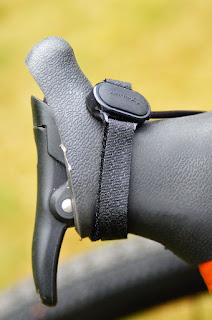It is literally 30 years to
the day since an Austrian AuPair presented me with THAT book and my father
relented to months of not so subtle hinting and THAT Holdsworthy built Claud
Butler marked my thirteenth birthday. Both Butler and Buxom woman have long since
moved on...
These days Semi/compact
geometry frames mean oddly proportioned riders, such as yours truly needn’t go
the custom route and in real terms, prices have also fallen quite considerably.
Having Lee Cooper cold set
the Teenage Dream’s rear triangle and replacing its pretty patchwork parts for
a more contemporary groupset has often crossed my mind. Something along the
lines of Shimano’s Tiagra, maybe Microshift...I have a Sun Race equivalent
tucked away somewhere. A new rear hub and wheel build would complete the transformation.
Calling in a favour or two, the cost implication is a very tempting £150...
These thoughts call
particularly loud when I’m out of the saddle. Powering along the climbs and
dancing on the pedals, there’s some definite whip felt around the bottom
bracket shell. Outclassed is sporting terms, these thin walled tubes still
deliver a lively ride that has my soul singing and a massive grin engulfing my
face.
Ride quality is also determined
by builder skill. The Holdsworth was built to a standard, rather than a price,
which is very telling when hammering along at 35mph plus. By contrast and
though technically made from a “better” tubing, the Teenage Dream’s build
quality was decidedly “British Leyland” in places.
This was common to a lot of
small manufacturers who were trying to compete with both the established
masters and higher end volume producers during this era. That said; I recall a
big French marque being plagued by similar woes. They too were offering
complete machines for little more than the groupset, so even with their
purchasing power; corners had to be cut somewhere.
Runny brazing, poorly reamed
seat tubes and faced head tubes were commonplace. I even recall several
customers getting the wrong paint job! Runny brazing, reasonable reaming and
treat-like eggshells enamel demons were exorcised from my frameset in 2009.
With this and the ill fated
British motoring conglomerate in mind, it should come as little surprise to
learn I also remain fascinated with the Kirk magnesium frames from this period.
Though these were flawed in
many ways, I’d like one hanging on my wall. Frank Kirk came from an automotive
background and sought to apply the same mass production techniques to
lightweight bicycle frames. Seems they were also finished in house-powder coating,
of course.
Under the metaphorical tutelage of Richard
Ballantine, I love most genres of machine and also have a soft spot for rigid
cross country mountain bikes. I spent many years thundering along the forest
trails and getting seriously filthy on steel-tubed, fat-tired Kona and later
Univega based builds.
Lights from this era fell
into three basic types and in my view, grossly inferior to that available to us
now. It basically boiled down to dynamos, home brewed Lead Acid masters
blasters, or truly cheap and extremely nasty “Halogen” units, which were of the
glimmer variety. These days, even a very basic LED blinkey is light years
ahead, in every sense.
Some, such as this See Sense
unit can even collect data about that potholed lane you would’ve only known
about, having trashed a rim with those glimmer types. Once the preserve of
suburban commuters, there are plenty of compact torch types packing 600 lumens
plus.
Sure, there are still some
minor limitations, usually in terms of run times in the highest settings.
Here’s a few we’ve recently tested at Seven Day Cyclist www.sevendaycyclist.com http://www.sevendaycyclist.com/moon-lx760-front-light http://www.sevendaycyclist.com/moon-meteor-storm-pro-front-light
Elsewhere, having heard of
my recent puncture plague, the good people at the inner tube shop www.innertubeshop.com
sent me a batch of five. I have since discovered my not so friendly farm feline
has, for reasons known only to himself, been biting the tyre sidewalls!
He’s
not been able to reach the Univega, or Teenage Dream, hence no flatting there.
If recent commentators are
to be believed, we’re due for a serious cold snap, involving a healthy
carpeting of snow. Perhaps I should be dusting down these 700x42 42mm Continental
and my Univega's Schwalbe winter spiked rubber...

















































